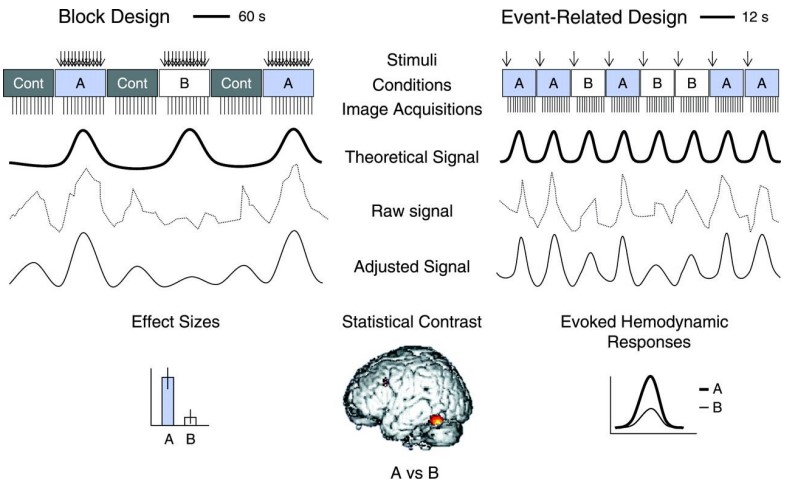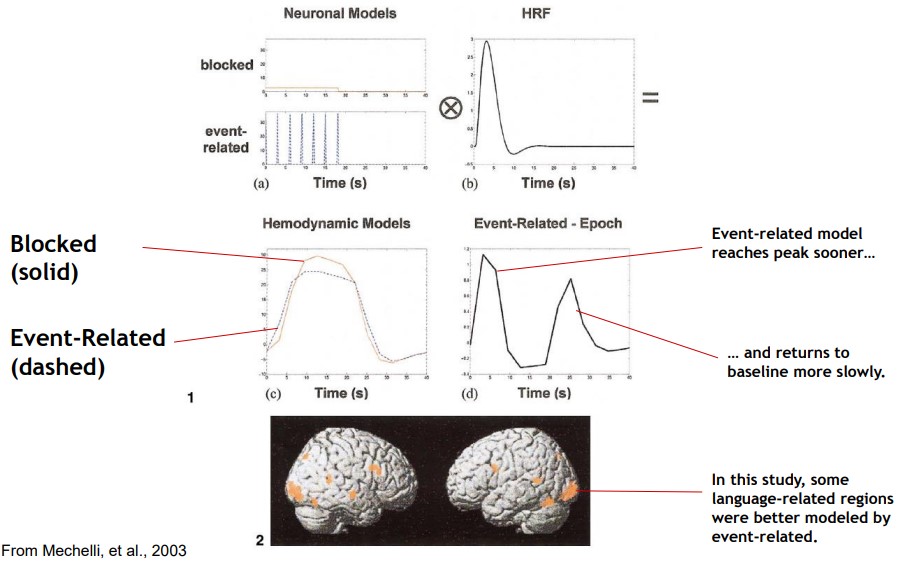14.5 fMRI Experiment Design
One can control stimulus properties, stimulus timing, and subject instructions (i.e., what do subjects do).

Figure 14.13: Designs in a fMRI setup
We can also test specific hypotheses and also generate new ones in the process.
There are three kinds of designs:
Blocked designs
This is useful for inspecting state changes.
Event-related designs
This can estiamte the time course of an activity and allows for the determination of a baseline activity. This is best for post-hoc trial sorting.
Mixed designs
This is the best combination of detection and estimation. However, analyses are more complex.
14.5.1 Blocked Designs
These studies separate different tasks into distinct time blocks - two or more conditions are alternated in blocks.

Figure 14.14: Example of a Block Design
Each block has a certain number of fMRI scans and only one block per condition is shown. By making the conditions differ in only their cognitive processes of interest, the fMRI signal should represent the process.
14.5.1.1 Types of Blocked Designs
There are two kinds:
Task A vs. Task B (vs. Task C and so on…)
This allows you to distinguish differential activation between conditions, but doesn’t allow you to identify stuff that’s common to both tasks.
Task A vs. no tasks (vs. Task C…)
This kind of design can show you an activity that’s associated with a task, but can introduce unwanted results if it is not introduced properly.

